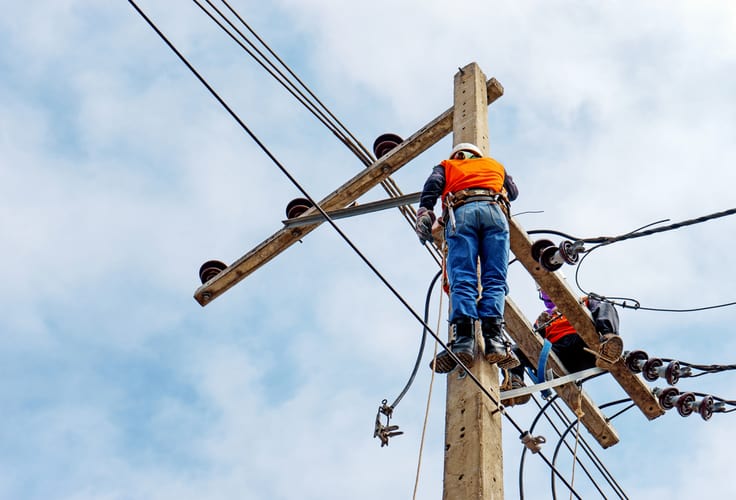
Safety should be the highest priority on any jobsite. This is especially true whenever your project involves working with high voltage, such as constructing electrical transmission towers and power lines. Although much attention is paid to protecting those working directly on the lines — and deservedly so — workers on the ground also face significant risk when proper precautions are not in place. If the surface becomes energized due to a fault or downed line, the results can be devastating. Crew members can be seriously injured or even killed by a sudden electrical shock. This is why it is so important for contractors to understand the two main principles behind this danger: step potential and touch potential. Knowing what these mean and how to protect yourself from them could be the difference between life and death.
What Is Step and Touch Potential?
When high-current faults have a connection to the earth, a dangerous level of voltage can exist at ground level. Current that flows through any type of resistance results in a voltage drop. This means even grounded objects such as vehicles, poles or de-energized power lines can have a ground fault running through them. Anyone who may be standing near or touching these objects can be exposed to extremely dangerous electrical currents. Step and touch potential refers to the risks associated with these conditions.
What Is Step Potential?
This is the difference in voltage between a grounded object that becomes energized and the feet of anyone standing near it. The amount a person may be exposed to depends on his or her proximity to the source. This is because the drop in voltage is nonlinear and dissipates the further away it gets from the current’s point of entry into the ground. Depending on the soil conditions, the amount should be cut in half for approximately every three feet a person is from the point of entry.
What is Touch Potential?
When this term is used, it is referring to the difference between the voltage of an energized object and the ground. Alternatively, it also can be used to describe the difference between the hand of someone touching the object and his or her feet. One of the most crucial points to consider about this phenomenon is that a person potentially could be exposed to the full energy through an object even if it is grounded at a point remote from where he or she touches it.
Mitigating the Dangers
Now that you understand the potential for catastrophe that these concepts bring to your project site, it’s time to think seriously about step and touch potential safety. Although the risks are very real and very serious, there are some steps you can take to make them less of a concern.
One of the best and easiest forms of step and touch potential protection is simply limiting access to the site. Having crew members who are not directly involved in the work passing through the area needlessly only increases the chances of such an incident. This is where understanding the principles of step potential come into play, because they can help you set a perimeter around transmission structures that would prevent workers from being exposed to hazardous voltages.
The use of personal protective equipment that insulates workers is another critical step you need to take any time your personnel are working around electricity. This includes rubber gloves and insulated shoes or boots. Be sure that you review the resistance rating of your gear and ensure that it will provide adequate protection for the situation.
Another effective strategy is to pay attention to site conditions. Adding a layer of crushed rock provides extra insulation and lowers the amount of current that can flow between someone’s body and the ground. Removing weeds and other heavy vegetation also makes a difference because plants can become energized and may conduct electricity into anyone who comes into contact with them.
Creating an equipotential zone (EPZ) is another way to ensure that any sudden faults can be safely conducted away from people. This can be accomplished through the use of EPZ grounding grates such as those produced by YAK MAT.
A Complete Resource for Site Safety
Keeping everyone safe on the job is paramount no matter what you’re doing. Protection from electrical shock is just one of the many safety and site access solutions YAK MAT provides. To learn more about what we can do for you, get in touch with us today.
